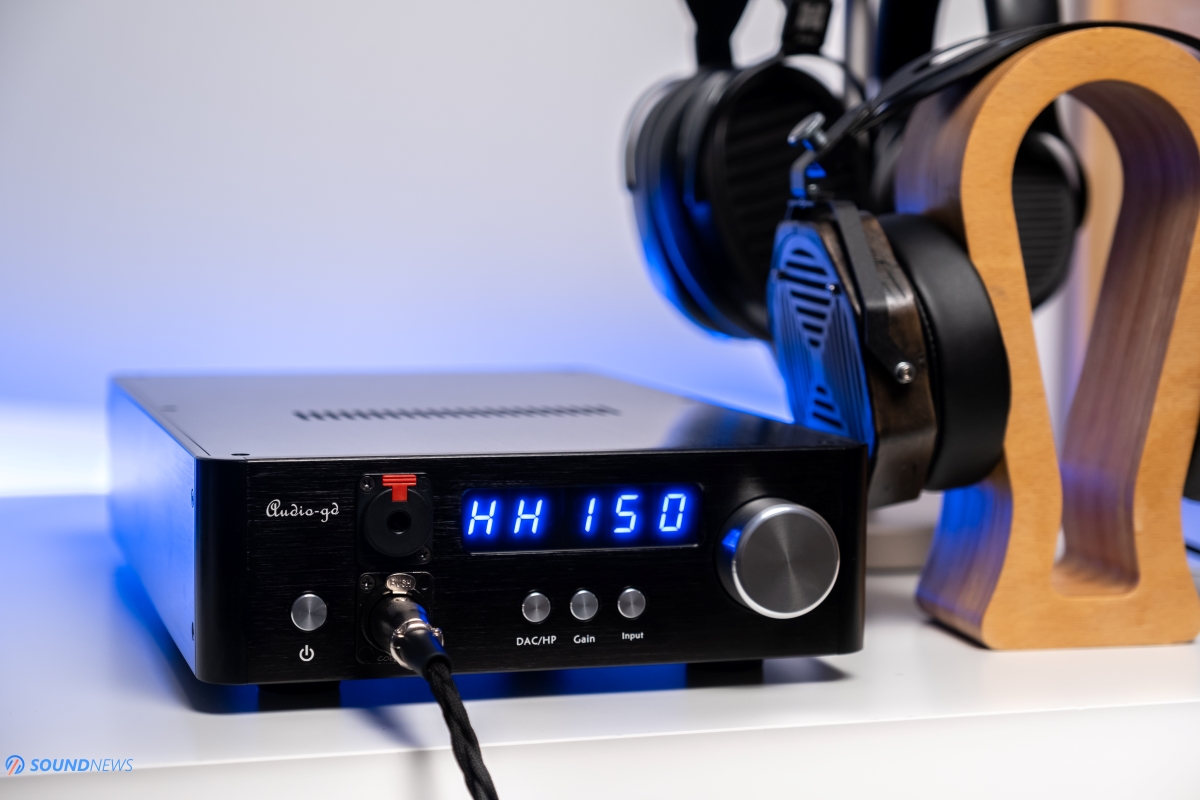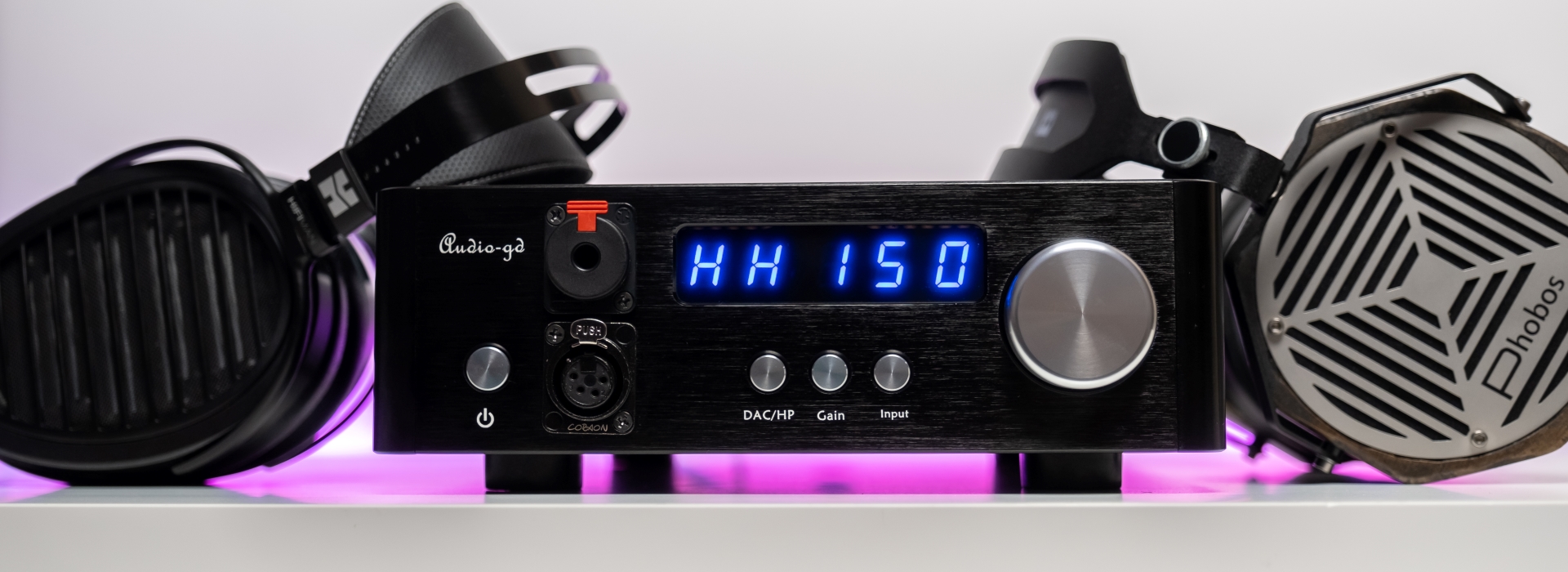
My Video Review:
You might have heard about a company from the land of the Red Dragon called Audio-GD. They are crafting anything really in the digital and analog domain. From simple DAC and headphone amp units to big and heavy integrated amps and mono-blocks.
In the early days of headphone listening, thanks to Audio-GD and the likes of Headroom, Headamp and AMB Labs, balanced headphone drive became the new trend and the new driving force of the headphone movement. I still remember the long discussions about what is the best balanced headphone amplifier, what would win in a fight between Master-9, AMB β-22 and Headamp GSX? Being curious by nature, I’ve bitten that apple and soon, a first generation of Audio-GD Master-9 was sitting on my table. Planar-magnetic technology although old, at that time was really at its infancy and was just paving its way for the road ahead. When Audeze, Hifiman and the rest of the planar mafia hit the market, nobody was prepared for that, not even Audio-GD. Those demanded huge current swings and power reserves that current production amplifiers didn’t possess.
The humongous and extremely large Master-9 was mostly tuned for large dynamic headphones as Sennheiser HD800 and Beyerdynamic T1. When my long love affair with HD800 and T1 ended and planar headphones conquered my playlist, I needed another amplifier that would make them fast and articulate, so Master-9 needed to go. I still remember it and I had only good memories of it.
Obviously, Audio-GD had multiple iterations of it, including one tuned for the power hungry Hifiman HE-6, they are updating their gear once about two years trying to keep up and I know that current production Master-9 is a much different beast compared to the one I had.
When I was asked if I would like to test a DAC and headphone amp combo from Audio-GD that is also working in Class-A as my old Master-9, I said yes without thinking twice. It is called D-28.38, but from now on I will just call it D-28.

Unbox Therapy
Unboxing experience is positive, it came double boxed, there is lots of foam for extra protection and the unit itself is well protected from the outside world.
Opening it up, I’m greeted with a very large unit (Audio-GD, you didn’t change at all) suggesting some serious power underneath that top cover, I found two plastic remotes – that is a first in my Hi-Fi journey, there’s a power cable, a USB type-B cable and ten replacement fuses in case the one inside the unit will burn. Two remotes and ten fuses? These guys are really not loving shipping big boxes back and forth, that is actually a good idea putting those extra spares in the package. Thinking in advance is always good.
There isn’t a user manual in the package, if you think you need one, please check its official page under the User Manual tab.
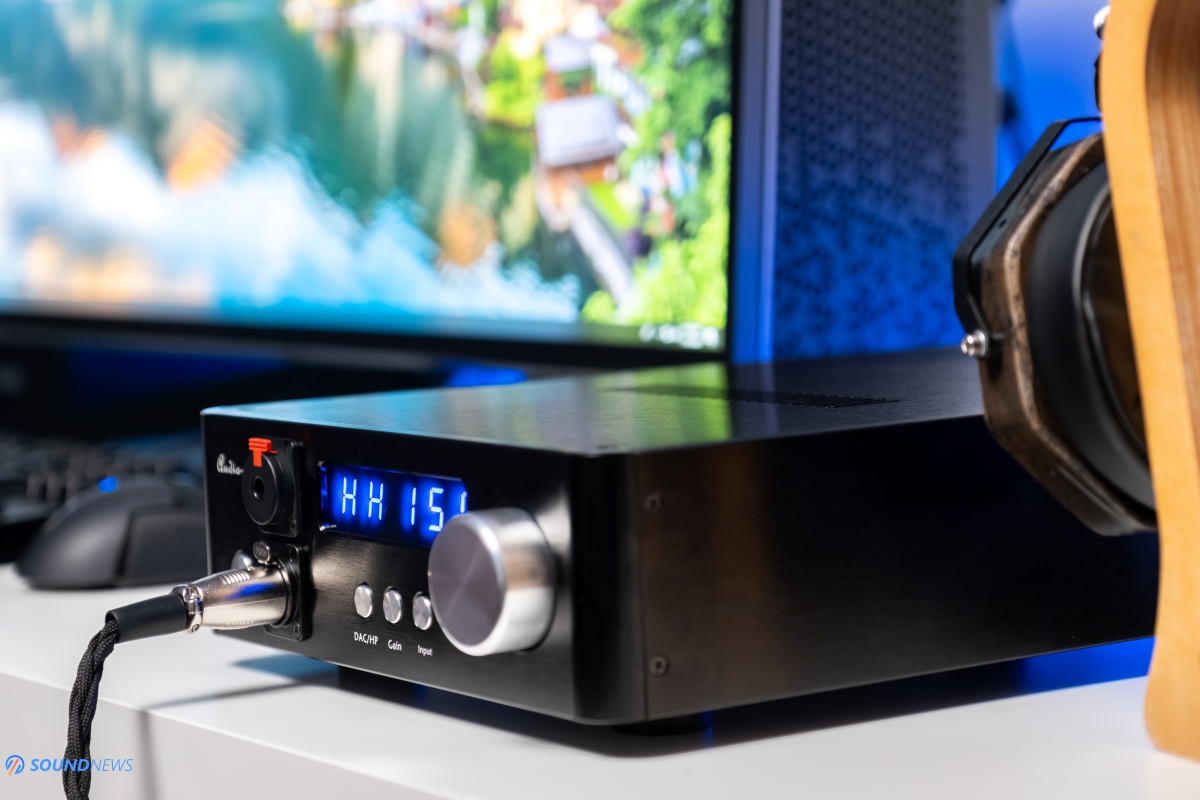
Design & Build Quality
It looks really big and imposing, so far this is the biggest DAC/Preamp/Headphone amp unit that I have tested of late. It is more deep that wide with an interesting parts placement once you take out the top cover. At about 5 Kg (11 lbs) it is not really lightweight for a desktop unit but not extremely heavy either.
It looks fine; it is more industrial looking than Hi-Fi to me. I’m really glad that Audio-GD changed the raw aluminum bolts on their black units with black ones. It is looking much more elegant this way. It has rounded edges on every corner so you would not cut yourself with it, even operating headphones near it shouldn’t be a problem. Underneath the display assembly, an R-Core transformer is located, it dissipates a lot of heat, so I strongly don’t recommend putting something on top of it, especially on those elongated holes that are pushing air out of the unit. The metallic structure is thick and all the panels around it are thick too, it should protect the unit from external wireless interference.
It looks built to high standards, that thick anodized aluminum should protect it from scratches and accidental damage, I do like its simple but efficient feet that should absorb those nasty vibrations.
There is one thing that triggers my OCD though: A black unit should have black buttons and the volume knob should be also black. This is nitpicking from my part, but I would like Audio-GD to offer full-black units, it would look classy and almost invisible for the cat eyes of my wife.

Controls & Connectivity
It is clear we are dealing here with an audio engineer than with a designer when both headphone outputs are using locking type headphone jacks. It has a single ended 6.35mm (1/4”) jack and a 4-pin XLR jack, both are locking the headphone connector into place, so when by mistake you’ll leave office with your precious headphones on your head, instead on dropping the amp, you will be dropping your headphones on the ground. That’s why you’ll never see a scratched or a dropped Audio-GD unit… Jokes aside, on the front you can find 3 buttons, one is changing the input, one the gain and one switches it from DAC mode to preamp mode or to headphone mode.
On the back it will offer 4 digital inputs as: USB, I2S (via HDMI input), optical and coaxial. There are two analog RCA and XLR inputs and three analog outputs coming in RCA, XLR and ACSS flavors, just in case you’ll want to use is as an independent preamp or headphone amp.
This is probably the most crowded back panel I’ve seen of late, it has so many inputs and outputs, it is looking incredibly versatile.
Display
I would normally not write about this, but I feel I need to explain how it works. It is unusual at first, but once you know what is the meaning of the two letters and those three numbers, you’ll never be confused again.
First letter can have 3 positions: D, P, or H. D means it works as a pure DAC and the volume position can’t be changed, P works as a preamp and H means the headphone outputs are engaged. Second letter can have an L or an H, L is you low gain and H is your high gain. First number is showing you the selected input, on the back all digital and analog inputs are numbered from 1 to 6, 1 is USB, 2 is you i2S, 3 is your optical and so on. Next two numbers will show you the volume position from 01 to 99. Once you figured this out, you are all set.
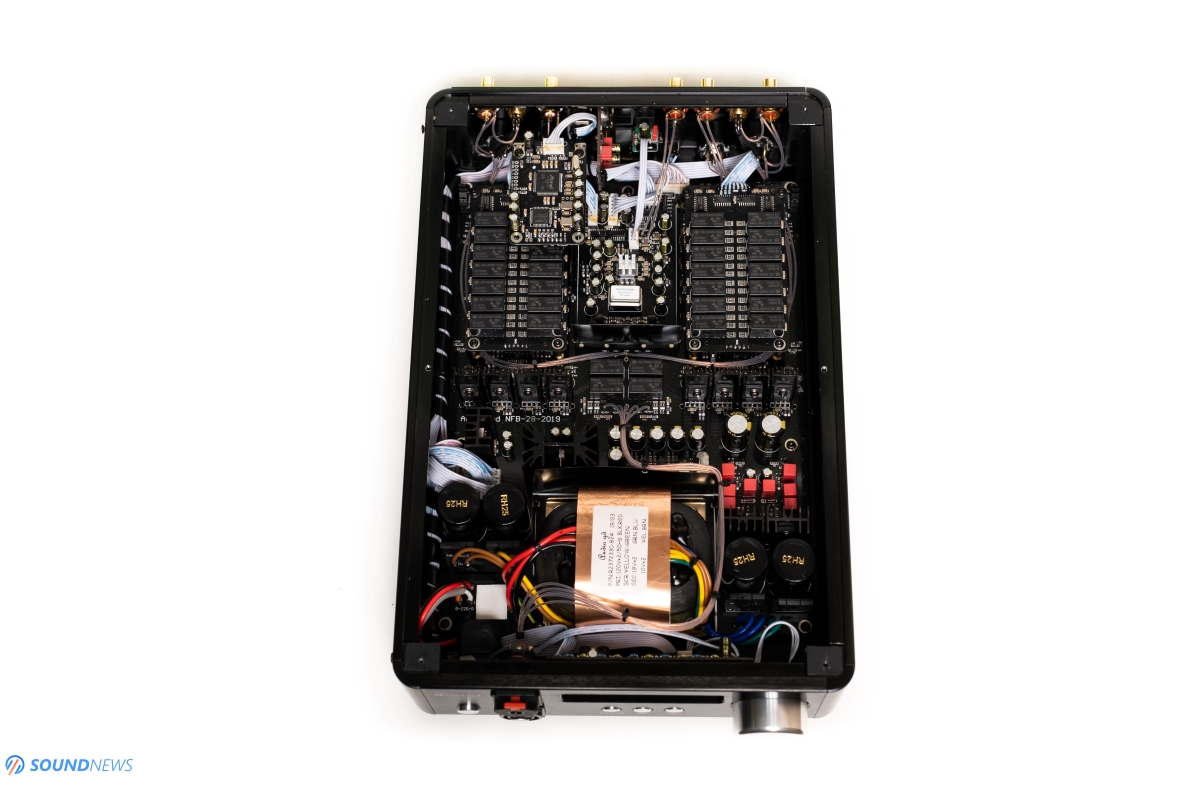
Tech Specs
We are dealing here with a fully discrete, fully balanced DAC, preamp and headphone amp that is working most of the time in Class-A. From input to output the signal is always balanced if you are using the XLR outputs, you can be sure about that as I followed the signal path myself and counted the transistors and mosfets along the way.
I spotted two Toshiba C5171 and another two Toshiba A1930 transistors per channel, 8 transistors in total, meaning this is a 100% balanced signal and a very ballsy one too. I see it using tens of JRC caps, lots of audio-grade Nover caps too, a huge shielded R-Core transformer with a very robust power filtering stage consisting of multiple ultra-low noise voltage regulators.
At the heart of digital processing a desktop grade ESS9038 PRO DAC chip will do the heavy lifting. It seems to be passively cooled with a heat sink radiator which is nice. Around it I see a high performance Accusilicon femtosecond clock.
On the digital input board, I see an Atmel FPGA, another programmable Xilinx FPGA, and two expensive but really advanced Crystek clocks. From my point of view, this particular D28 is having all the bells and whistles a high-performance and expensive unit should have.
There are 3 types of D-28:
- The most affordable one called D28.28 is coming with a lower tier ES9028 PRO DAC chip, it costs $700
- D28.38 version is coming with a higher performance ES9038 PRO DAC chip and costs $780
- And there is a fully upgraded version with Accusilicon and Crystek femtosecond clocks – exactly the unit that I am testing, it will cost you $850
I will skip all the specs because there is a lot to write about them, but will just mention that as a line preamp it will offer up to 5V on the RCA out and up to 10V on the XLR out. This is a proper analog preamp, not like those fake digital preamps (2V on RCA and 4V on XLR) that in truth are just using the output stage of the DAC.
As a headphone amplifier it will pump 9.5 Watts in 25 Ohm, 0.6 watts in 600 Ohms on the balanced out and 3.6 Watts in 25 Ohms plus 0.2 Watts into 600 Ohm loads on the single ended output. Some very serious power underneath that hood. It should move and control those drivers pretty easily. Let’s check that out.
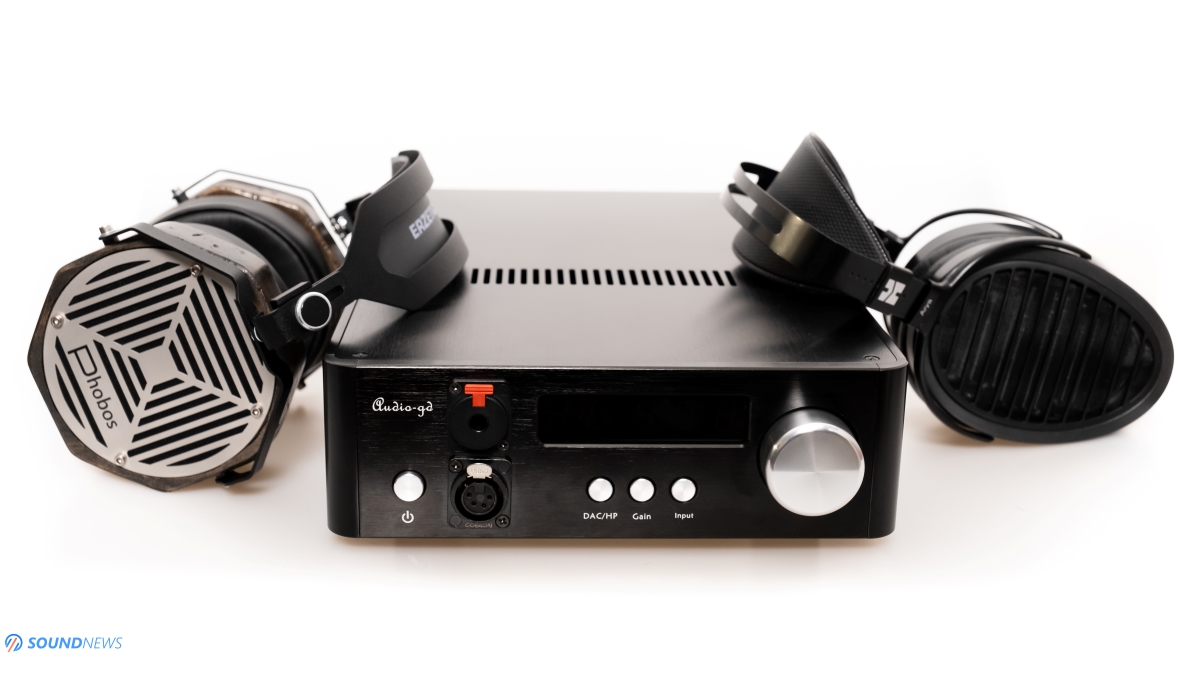
Sound Performance
I. Burn-In Requirements
Since it has tens of capacitors inside, from which six are really big and juicy, plus that oversized R-Core transformer, it will need time before it will play at its maximum potential. When I fist powered it on, it sounded harsh and all over the place, there was a sense of hardness and a feeling that something is just wrong sounding. I put D-28 for an 8-day burn-in connected to a laptop and playing some tunes on repeat. I just hit 150 hours with it and I am feeling that my initial impression is not valid anymore. It changed drastically to unrecognizable, it sounds like a different unit altogether. Even the power reserve somehow feels bigger now. Another thing that I felt and that Audio-GD didn’t mention on their website is that after powering it on, it will need about 20 minutes of warm-up before it starts sounding full-bodied and engaging. I have a simple trick: when it’s warm at touch, then it’s ready to rock, it’s that simple.
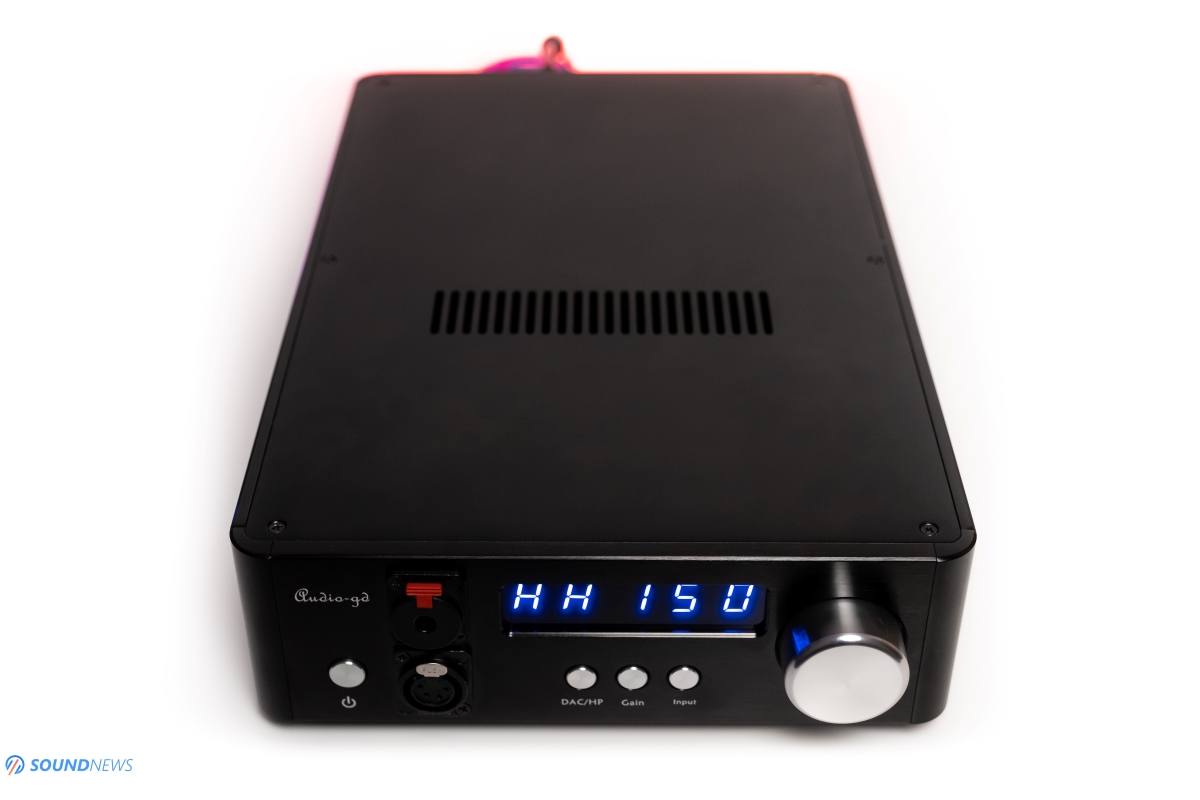
II. Tonality and timbre
For starters, I will mention that this is the second DAC/Preamp/Headphone amp combo that I have tested that works in Class-A and moves to AB around the halfway on the volume wheel. The first unit was the $1800 Burson Conductor 3 Reference.
While listening to D-28, I just couldn’t take out of my mind the idea that both units are sounding so close in terms of tonality, like twin brothers. D-28 has a high-density type of sound that fills the gaps between the notes. It sounds full-bodied, quite meaty, it always wants to grab my attention. If you plan on listening and working at the same time with it, that will not work. It always wants to impress the listener, showing all its best tricks like: “Hey, look how big is the stage, look how deep this note can go, look how controlled this bass riff is, or check this uber detailed cymbal crash”. D-28 is somehow easy going, detailed even past top octave, but without making me clench my teeth. D-28 is very much like that and I hope it’s not just a honey moon period.
D-28 has a warm tonality that works extremely well with this particular chipset (ES9038) that in turn, is adding other traits to the table like speed, impact and high detail retrieval. I think the overall package of all discrete transistor-based circuit + class A output stage and that extremely fast, airy and detailed ES9038 did real wonders in this 5-kilo package. It was not just a great part selection, while listening to it I feel that this is a perfectly balanced and matched system that is neither too warm or dry, neither slow or too fast.
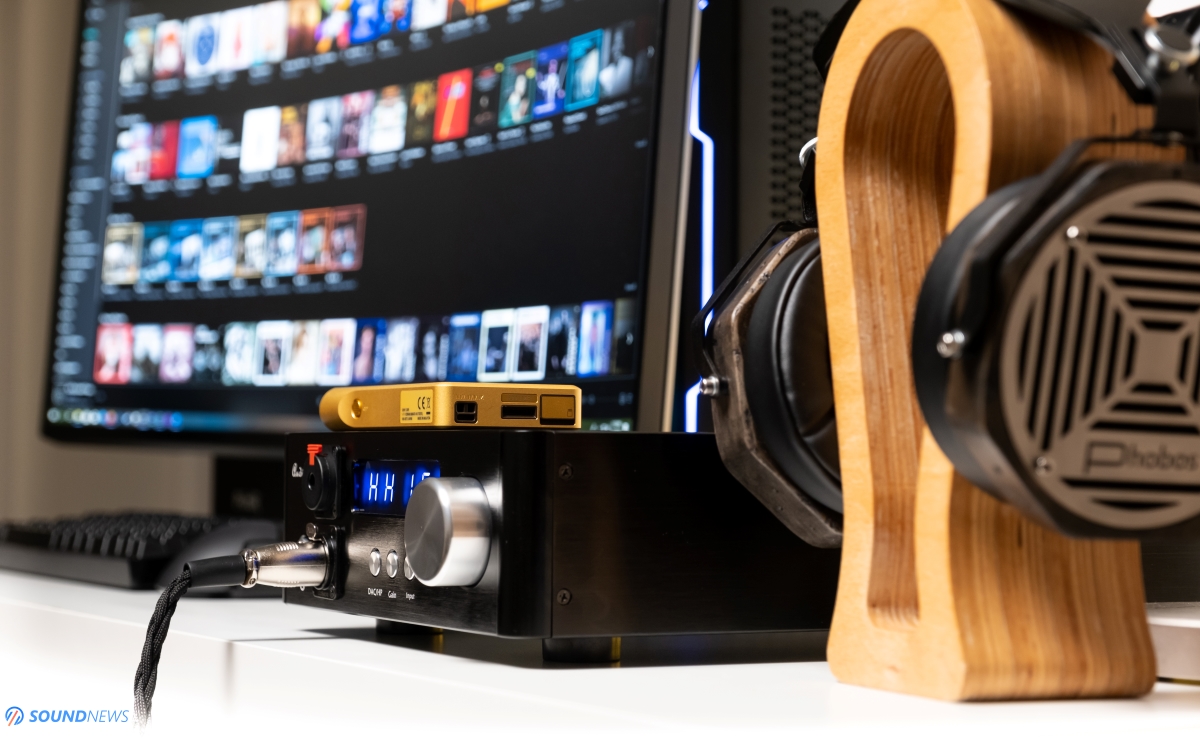
III. Using it with sensitive IEMs
I used three sensitive IEMs that will show the noise floor of any amplifier be it portable or desktop. FiiO FH7 was the main IEM, followed by Simgot EN700 PRO and then by Moondrop Starfield. Out of 9500 mW of power that D-28 can provide, only one is needed for my IEMs to achieve the ear bleeding level of 110 dB. Because of that, extra care is needed while handling them. Of course, going on the 6.35mm jack and then on the low gain makes my IEMs more manageable to use since the volume doesn’t rise too fast.
There is a faint and barely audible hum on the low gain, it will not be increased in intensity while raising the volume. Same happens on the high gain, but luckily the hum is barely audible as well. Powering D-28 with Plixir Elite BAC400 and then with a Keces BP-600 passive power conditioners didn’t solve the issue and the hum can still be heard. With all that said, D28 was not developed for such easy loads as hyper sensitive IEMs, so this was mostly an experiment from my part.
In case you’ll actually want to use IEMs with it, I have an easy solution that will solve the hum problem for good by the name of iFi Audio Ear Buddy or a better version of it – the iEMatch. Attach it to the 6.35mm jack with an adaptor and forget you ever heard a hum on it, no other tricks are needed. It should work even with your sensitive dynamic headphones as Focal Stellia for example, that is notorious for picking the noise floor of an amplifier.
At 40 volume position out of 100, I was comfortable driving any IEMs with an amazing control, speed and slam. I was worried just a tiny bit that the 2 Ohm output impedance of this unit might take away some of the speed of balanced armatures, luckily that didn’t happen. When I tested the Topping DX7 PRO that had an output impedance of 9 Ohms, my IEMs also sounded excellent. With easy loads it’s clear that power output and good driver control is more important than the output impedance of the amp.
As for sound with IEMs, D-28 sounded extremely precise, very linear and honest, it provided an extended frequency response. I observed that low-intensity bass notes started pulsating, sub-bass was just impressive in terms of quantity and quality with some electronica. D-28 can move huge amounts of air in an instant and fill the room nicely with it. Pin point placement of the notes around me is very accurate and precise, stage goes far and wide. Honestly, the hum was the only issue I had with IEMs, sort that out and D-28 is sounding like a very serious piece of equipment.
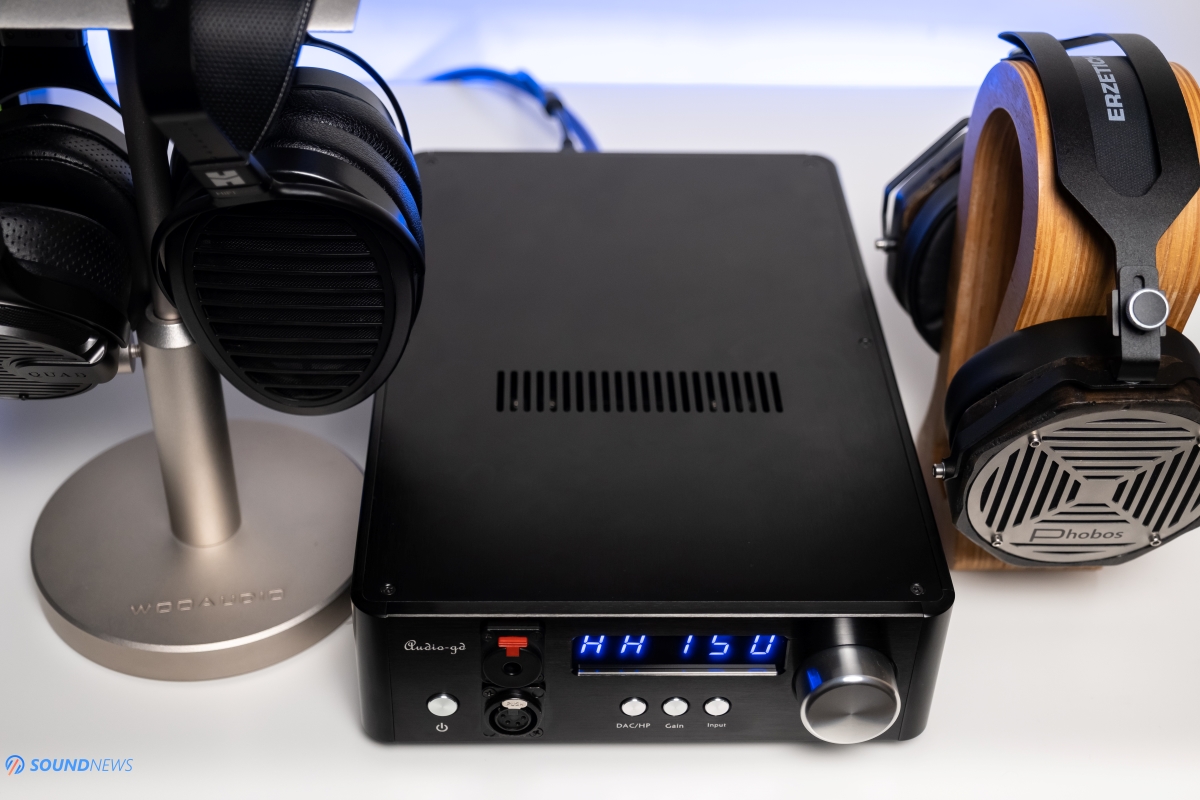
IV. Using it with full-sized headphones
First on the test bench was the fun sounding Quad Era-1, using a 4-pin XLR balanced cable and engaging high gain, volume wise I was somewhere between 50 and 55 depending on the song. For a headphone of this caliber, half-way on the volume pot says a lot about the power reserve of D28 and of its huge headroom that is left on tap.
Moving on to Erzetich Phobos, I switched to single ended jack (still waiting for a balanced cable to be delivered) and I could rise the volume up to 60. Weirdly enough, the largest headphone from my stable, needed less power to be properly driven. It was fully driven to its maximum potential. Those big 106mm drivers are easier to drive, but harder to control, as a larger driver surface might have issues with speed and control. D-28 offered that too in spades, Phobos were sounding fast, pumping lots of positive energy. I never heard a loose sounding beat on them and I think that the warmer presentation of D-28, especially in the upper treble made Phobos more enjoyable in the long run. This is a very good pairing in my book.
Moving to the Hifiman Arya, I switched to balanced connection again and I could raise that volume up to 65, they were fully driven with a huge power reserve left on tap. Headroom was bottomless, even with -15 dB DR audiophile stuff I couldn’t go past 70 volume wise. Arya, for the moment is the most linear and straight as a line headphone from my stable. D-28 infused a bit of joy in it, especially in the bass and midrange department. It made them more enjoyable to listen, the life in them awakened and I was hearing a wider soundstage with them compared even to my reference Benchmark HPA4. Soundstage level on Arya is very tall but not that wide, this is one of the biggest issues of Arya, inexperienced listeners are complaining about this now and then. Attaching them to D-28, I felt that sound expanded in width (especially on the balanced output) and Arya was not sounding inside my head anymore. Arya had probably the best matching compared to the rest. It solved all the shortcomings I had with Arya: tall soundstage that is not very wide, linear bass and midrange. Audio-GD unit doesn’t overemphasize the treble, it remains detailed and extended but thankfully natural and unoffensive.
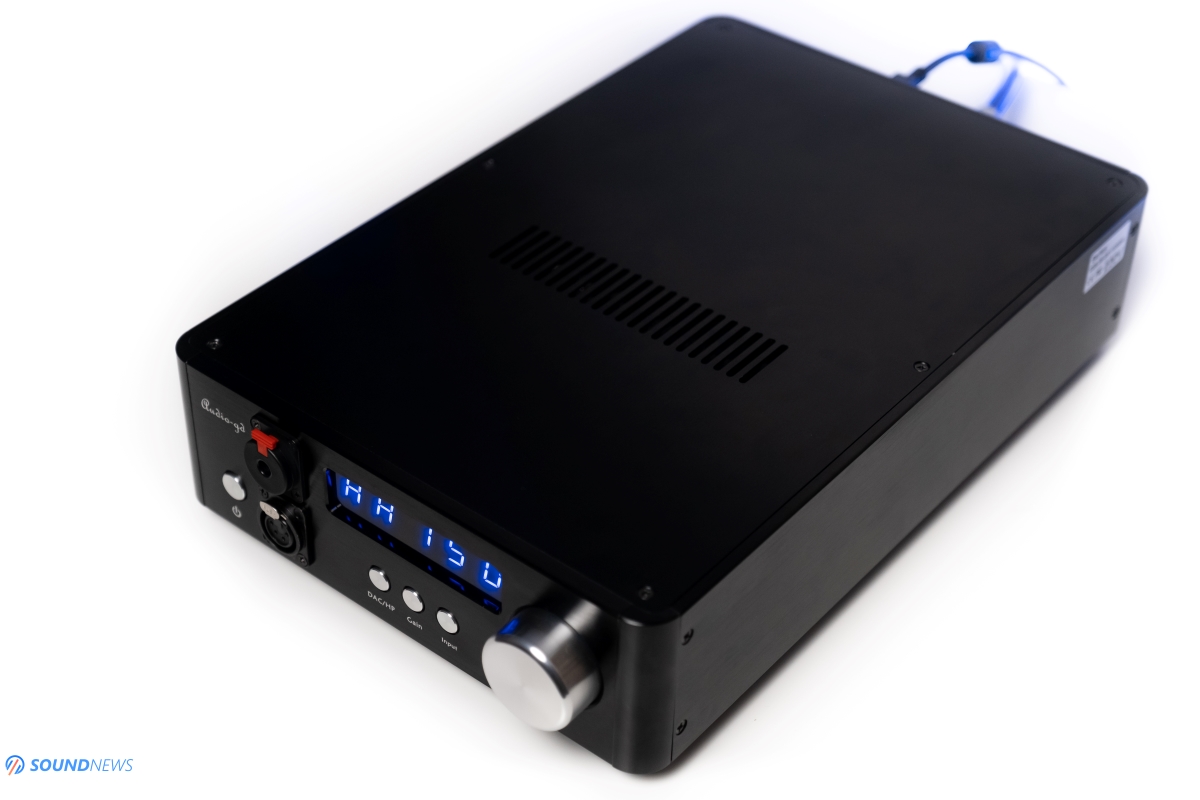
Listening Impressions
Rising my mood level with Helge Lien Trio – Gamut Warning I was immediately taken away by the sound placement around me with a very clear and sharp image. I could look so deep into it; I could focus on any sound I want very easily. That contrabass sounded so deep, it was like sitting near me, very present and real sounding all the time. The chords vibrations were just spot on for my tastes. Even those multiple cymbal hits in the background sounded so clear and vivid and yet so smooth and pleasant. When it comes to piano, I personally don’t know a lot of amps that can render it perfectly in terms of pitch and decay of those notes, yet on this unit I hear its sharp outline, I feel the weight of those notes and I feel a smooth long decay that sounds natural to me. That piano in the back is just playing with my imagination and those harder hits at the end sounded so scary real that I turned my head checking if there is somebody else in the room. Impressive performance, I do wholeheartedly recommend trying this band and this song for yourself even if you are not a jazz aficionado.
I had an urge listening to Dio – Holy Diver, I pressed play and immediately I felt like standing on top of a mountain. Dynamics rose high immediately! Those hard-hitting dynamics were just phenomenal, I started air guitaring around, headbanging, smiling and toe tapping like a mad man! I’m gladly nobody saw me in this posture. That heavy tonality, full-bodied nature and an excellent midrange performance made this song unforgettable. What was very unusual for me to say, is that an ES9038 PRO based DAC/Headamp can sound linear and extended but never in my experience the midrange was so full of life, so amazingly real. I felt its presence immediately as goose bumps immediately covered my hands. I liked that the blend of a guttural and powerful voice, hard hitting drums and some distorted guitars didn’t create an ugly unlistenable mess. On the contrary, the airy presentation of D-28 made the space between all those sounds much bigger, like the stage where the band plays increased in size and there was more space between the band members. An incredible presentation and D-28 seems to have the right ingredients for a powerful and angry presentation when it comes to rock and metal.
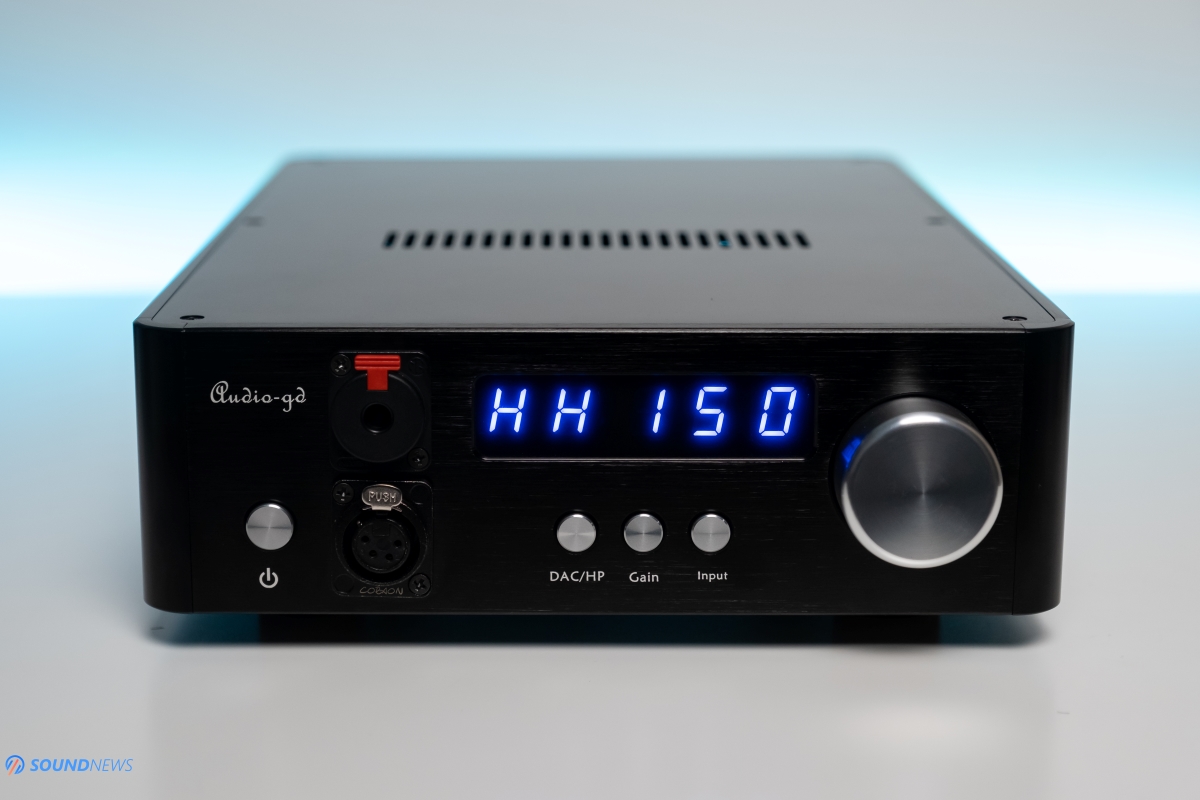
Moving on to faster tunes like Infected Mushroom – Guitarmass and Groove Attack, I was skeptical at first that D-28 might not have great control over a planar-driver. Oh boy, how wrong I was. The huge power reserve came to the rescue, those bass notes were hitting my eardrums constantly and without mercy. This is among the deepest bass I’ve heard in an all-in-one unit like this and the best bass I’ve heard in a unit that costs less than $1000. Sub-bass is great and it seems to go down to the lowest octaves, I wish my former first-generation Master-9 had speedier bass and driver control like this one has. It needs to be heard to be believed. Slam is absolutely incredible, I am feeling the bass vibration even in my jaw and thanks to that extended stage and airiness, everything just pops around me very naturally. Diaphragm control is great and drivers are moving freely back and forth, awakening some nasty dynamics. D-28 works great with electronica, that big power reserve and those power banks surely helped in delivering an explosive and engaging performance. D-28 is very much against boring, slow and laid back notes, and it is more on the fast line adding on top a dense and full-bodied tonality.
When I moved to acoustic music like Bozzio Levin Stevens, Neil Young, Eric Clapton and Johnny Cash, that was the moment when D-28 shown me the other side of the moon. The storm was over and those fast slamming notes became gentler and smoother, yet still full of life, richer in tone and filling up that stereo image that stood in front of me. Pin point imagining was great and I could hear the positioning of everything around me. I could pick a guitar from a song and listen just to that one until the music was over. I could count the distance between the band members and between them and me. I like it when music is expanding on all axes and walking through all that becomes much easier and way more fun. Guitar vibrations are just spot on, they have a longer weep and decay, voices are sounding full and imposing, nothing really to complain about.
Ladies and Gentlemen: Mozart, Vivaldi, Bach and Beethoven almost all of them in Hi-Res. Going through this legendary music I felt like it is pushing all those notes farther away from me. I am hearing the widest soundstage I have experienced in a sub $1000 audio component. Sound was always expanding far and wide, especially on the balanced connection the space between my right and left ear is somehow increasing. D-28 worked great with classical and it emphasized all the good parts of it.
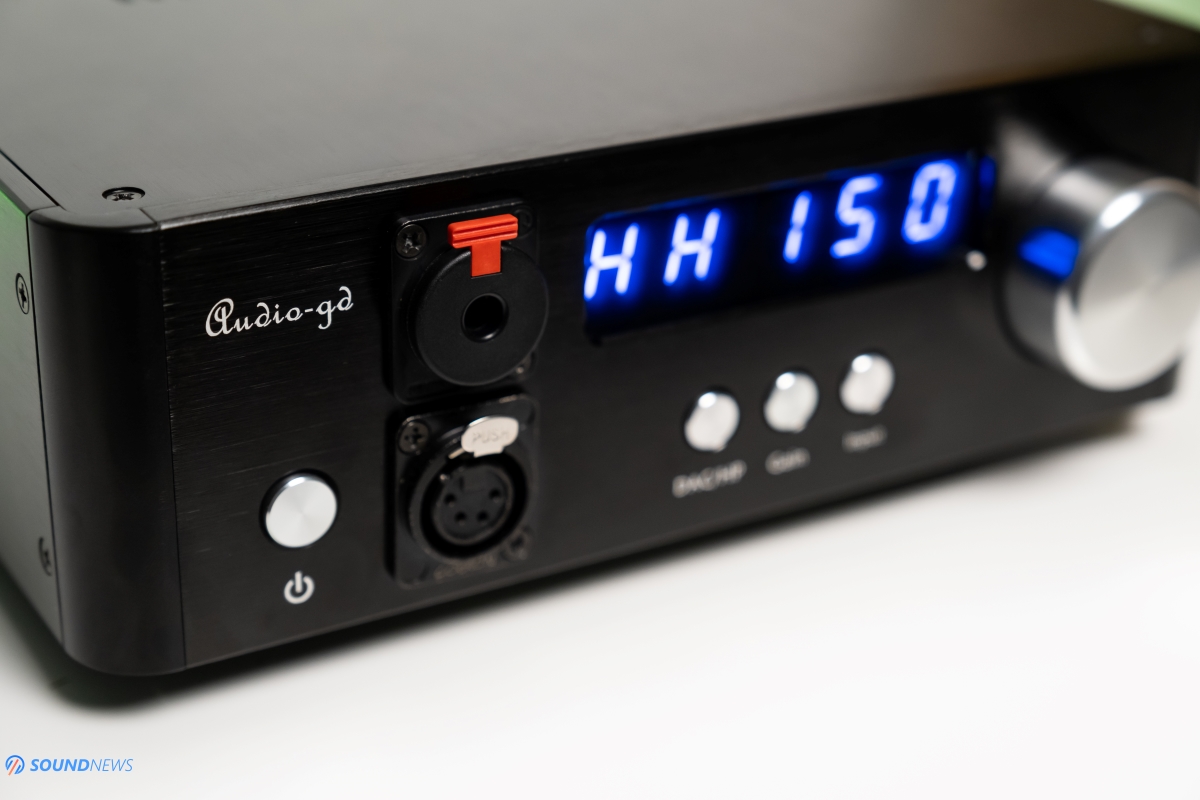
V. Transient Response
Overall, the transient response is good, it is changing depending on the music. It will be slow and gentle with jazz and acoustic and will increase its pace with faster beats. I do think it pairs absolutely great with the internal ES9038 PRO DAC chip that is adding a bit of speed and impact, it will sound great connected to faster sounding sources, just in case you’ll want to use it with an external DAC or CD player. However, I do think it will sound slower and laid back with an R2R ladder DAC, maybe even with R2R creations from Audio-GD. D-28 is really on the edge of what I would consider normal to faster paced, it will be fast but not too fast as for example THX designs are sounding. I strongly recommend using it with its internal DAC or with a faster sounding source. There is a R-27 and R-28 that are using R2R resistor ladder DACs instead and I’m sure that those will have a slower pace, a mellower sound and a laid-back presentation by comparison. Pick your poison according to your musical preference. If you enjoy a mellower and a relaxed presentation then a R-27 or 28 will make more sense, otherwise D-28 or a higher performance version of it: D-27, will fit the bill nicely.

VI. Frequency Response
D-28 is what I would call an extended sounding DAC and headphone amp when it comes to frequency response. It is amazing, especially in the sub and mid-bass area and same can the said about its midrange performance. Its bass and midrange can be considered elevated by just a hair, that creates this full-bodied, meaty and natural feeling. My usual bass tracks revealed information even as low as 20 Hz, it rumbles hard and it hits you as hard too. It infuses a bit of soul into your music and it will pair absolutely incredibly with linear sounding or with bright and harsh headphones. Phobos and Arya are extended even past top octave and can be tiresome in the long run because of that. D-28 is not making them bright or unbearable, it is making them manageable, calming the top end, without stealing too much presence from that region. Treble is good, I have nothing to reproach, it just takes a step backward to let those low and mid-tones shine brighter than others. Yes, it is a bit warmer sounding, it has a heavier tone and it is very reminiscent of Class-A and all-discrete amplifiers that I have listened to.
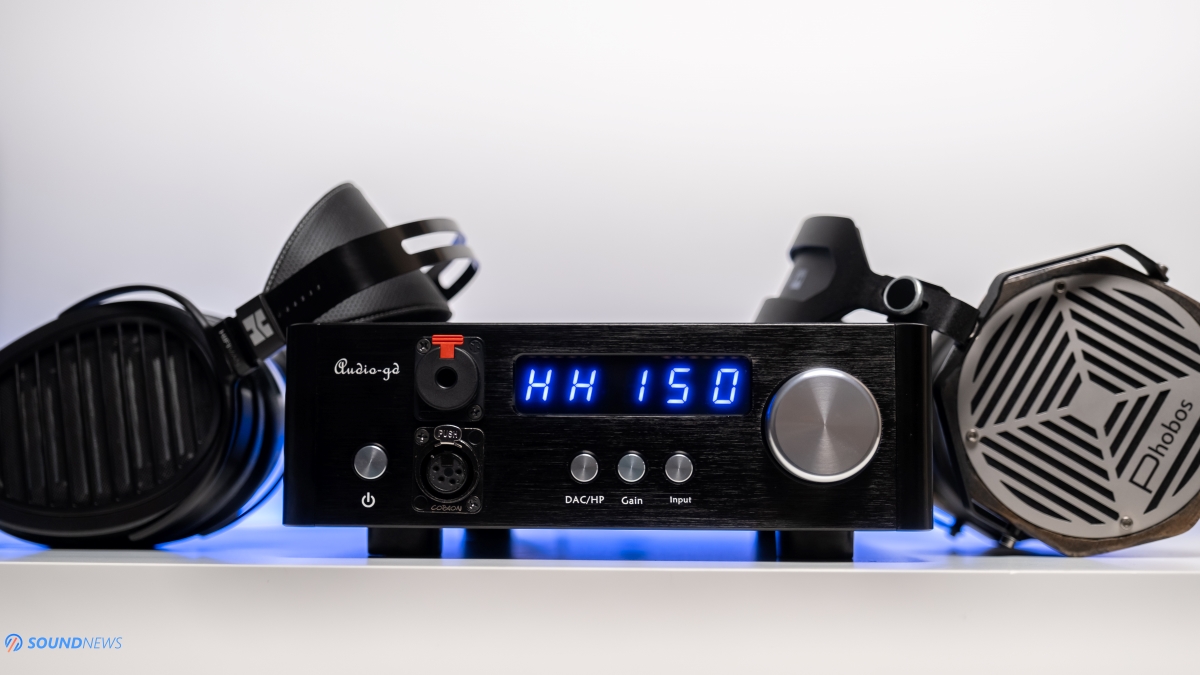
Conclusion
When I received the D-28, I was hoping to hear a small percentage of what Master-9 delivered, but with a small increase in speed and impact. I was partially right, its transients were faster compared to my older unit, its slam improved as well, even driver control improved a lot in the process. I was wrong about the “small percentage” because, in reality it delivered a lot more than I expected. The warmth was still there, huge soundstage didn’t run away, depth and pin point image was as good as it can be, frequency response was right up my alley, brightness was nowhere to be found. Just a musical presentation, with a great flow and tonal balance.
In terms of power reserve, this is an easy one, it is more powerful than the $1800 Burson Conductor 3 Reference and as a result, it took the first spot as the most powerful unit I have ever put on the test bench. Gobs and gobs of power, with a huge power reserve that has a big headroom left on tap. All that power would be nothing without refinement and finesse and D-28 provided a lot of that too.
When I think that everything that I mentioned costs less than $1000, it makes it a very easy recommendation compared to a lot of other units. The fully upgraded unit can be purchased for as low as $850 by accessing its official web-page. If you are an European resident, I strongly recommend buying it from Magna Hi-Fi by following this link (it’s more expensive due to VAT and taxes).
PROS:
- Solid build quality, industrial looks
- An impressive feature-packed 3-in-1 device (DAC, headphone amp and an actual dedicated analog preamp)
- Super extended on both ends, goes really low in the bass and high up in the sky even past 16 kHz
- Slightly elevated bass and midrange that created a very pleasing musical presentation
- Lots of warmth, infuses soul into any tune
- Impressive levels of transparency and resolution, unmatched at this price point
- Very precise pin-point imaging and note placement around the listener
- Widest soundstage, expanded on all axes, it is deep sounding as well
- Excellent slam and incredible dynamics
- Detailed presentation and clean sounding too
- Background noise can’t be spotted on desktop headphones
- Wide selection of inputs and outputs
- An amazing value!
CONS:
- Slight hiss with hyper-sensitive IEMs (can be solved with an iFi iEMatch)
- Triggers my OCD with those raw silver buttons and volume wheel (Nitpicking, I know)
ASSOCIATED EQUIPMENT:
- DACs: Audio-GD D-28, Matrix Audio Element X, KECES S3, Burson Audio Conductor 3 Reference
- Headphone amps: Audio-GD D-28, Benchmark HPA4, Kinki Studio THR-1
- IEMs: FiiO FH7, Simgot EN700 PRO, Moondrop Starfield
- Portable headphones: Sennheiser Momentum 2, Meze 99 Classics
- Full-sized headphones: Erzetich Phobos, Hifiman Arya, Quad ERA-1, Sennheiser HD660S
- Loudspeakers: KEF LS50W
- Interconnects: QED Reference XLR, Aune AL3 XLR
- Power Cables: Isotek EVO3 Premier (x2)
- Balanced Isolation Power Conditioners: PLiXiR Elite BAC400, KECES BP-600
